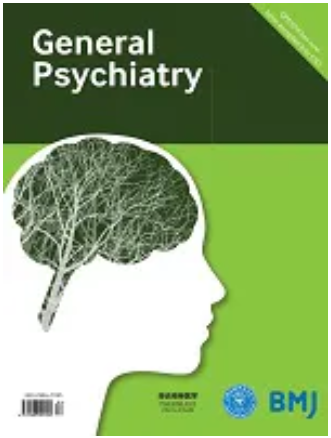Electroencephalography microstates as novel functional biomarkers for insomnia disorder
IF 5.3
3区 医学
Q1 PSYCHIATRY
引用次数: 0
Abstract
Insomnia disorder (ID) is one of the most common mental disorders. Research on ID focuses on exploring its mechanism of disease, novel treatments and treatment outcome prediction. An emerging technique in this field is the use of electroencephalography (EEG) microstates, which offer a new method of EEG feature extraction that incorporates information from both temporal and spatial dimensions.To explore the electrophysiological mechanisms of repetitive transcranial magnetic stimulation (rTMS) for ID treatment and use baseline microstate metrics for the prediction of its efficacy.This study included 60 patients with ID and 40 age-matched and gender-matched good sleep controls (GSC). Their resting-state EEG microstates were analysed, and the Pittsburgh Sleep Quality Index (PSQI) and polysomnography (PSG) were collected to assess sleep quality. The 60 patients with ID were equally divided into active and sham groups to receive rTMS for 20 days to test whether rTMS had a moderating effect on abnormal microstates in patients with ID. Furthermore, in an independent group of 90 patients with ID who received rTMS treatment, patients were divided into optimal and suboptimal groups based on their median PSQI reduction rate. Baseline EEG microstates were used to build a machine-learning predictive model for the effects of rTMS treatment.The class D microstate was less frequent and contribute in patients with ID, and these abnormalities were associated with sleep onset latency as measured by PSG. Additionally, the abnormalities were partially reversed to the levels observed in the GSC group following rTMS treatment. The baseline microstate characteristics could predict the therapeutic effect of ID after 20 days of rTMS, with an accuracy of 80.13%.Our study highlights the value of EEG microstates as functional biomarkers of ID and provides a new perspective for studying the neurophysiological mechanisms of ID. In addition, we predicted the therapeutic effect of rTMS on ID based on the baseline microstates of patients with ID. This finding carries great practical significance for the selection of therapeutic options for patients with ID.作为失眠症新型功能生物标记物的脑电图微状态
失眠症(ID)是最常见的精神疾病之一。对失眠症的研究主要集中在探索其发病机制、新型治疗方法和治疗效果预测上。本研究包括 60 名失眠症患者和 40 名年龄和性别匹配的良好睡眠对照组(GSC)。研究人员分析了他们的静息态脑电图微状态,并收集了匹兹堡睡眠质量指数(PSQI)和多导睡眠图(PSG)来评估睡眠质量。60名ID患者被平均分为积极组和假组,接受为期20天的经颅磁刺激,以测试经颅磁刺激是否对ID患者的异常微观状态有调节作用。此外,在接受经颅磁刺激治疗的 90 名独立 ID 患者中,根据 PSQI 下降率中位数将患者分为最佳组和次优组。基线脑电图微状态被用于建立经颅磁刺激治疗效果的机器学习预测模型。ID患者中D类微状态出现的频率较低,且贡献较少,这些异常与PSG测量的睡眠起始潜伏期有关。此外,经颅磁刺激治疗后,这些异常部分逆转至在GSC组中观察到的水平。我们的研究强调了脑电图微状态作为 ID 功能生物标志物的价值,并为研究 ID 的神经生理机制提供了一个新的视角。此外,我们还根据 ID 患者的基线微状态预测了经颅磁刺激对 ID 的治疗效果。这一发现对于ID患者治疗方案的选择具有重要的现实意义。
本文章由计算机程序翻译,如有差异,请以英文原文为准。
求助全文
约1分钟内获得全文
求助全文
来源期刊

General Psychiatry
医学-精神病学
CiteScore
21.90
自引率
2.50%
发文量
848
期刊介绍:
General Psychiatry (GPSYCH), an open-access journal established in 1959, has been a pioneer in disseminating leading psychiatry research. Addressing a global audience of psychiatrists and mental health professionals, the journal covers diverse topics and publishes original research, systematic reviews, meta-analyses, forums on topical issues, case reports, research methods in psychiatry, and a distinctive section on 'Biostatistics in Psychiatry'. The scope includes original articles on basic research, clinical research, community-based studies, and ecological studies, encompassing a broad spectrum of psychiatric interests.
 求助内容:
求助内容: 应助结果提醒方式:
应助结果提醒方式:


